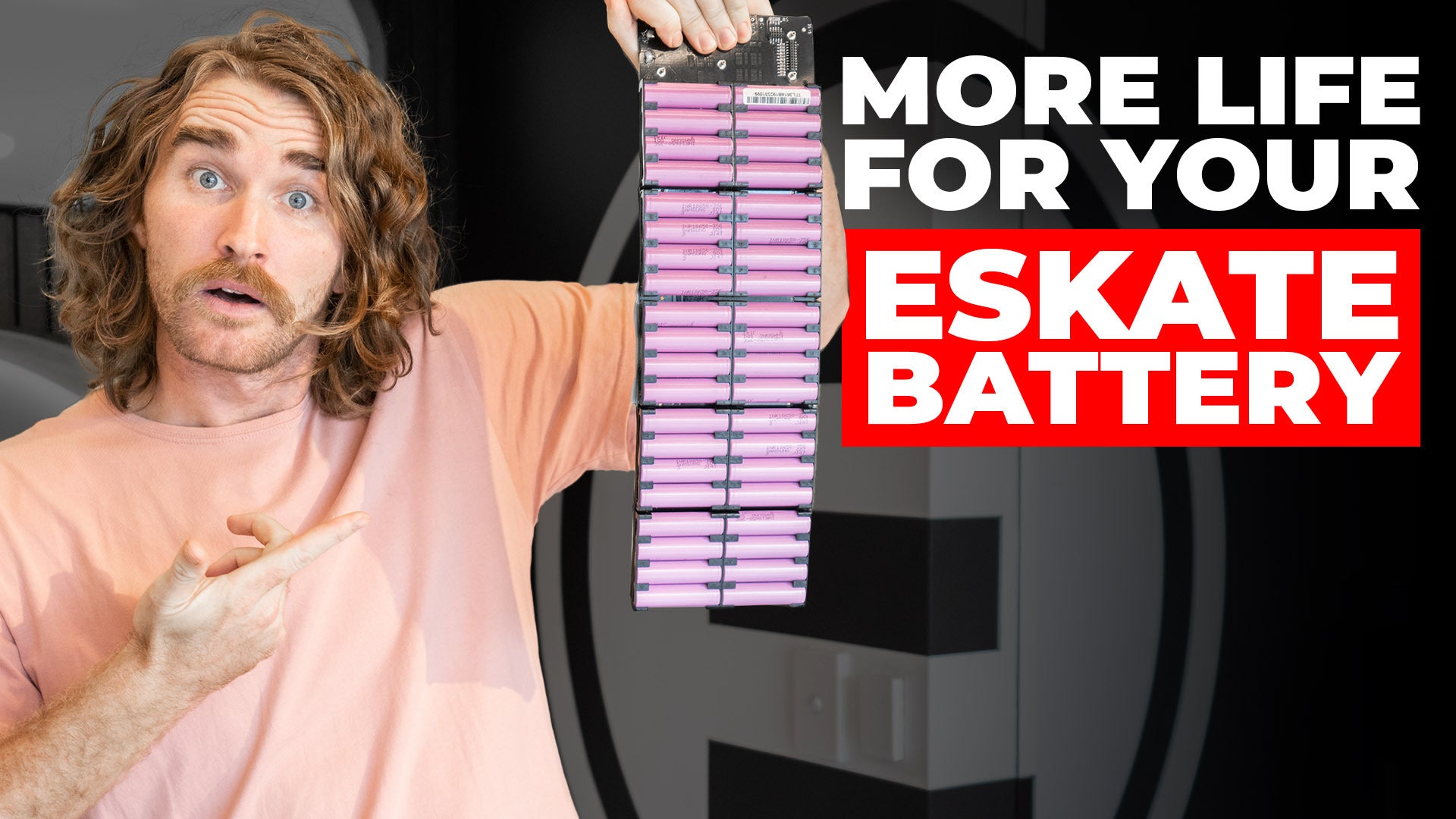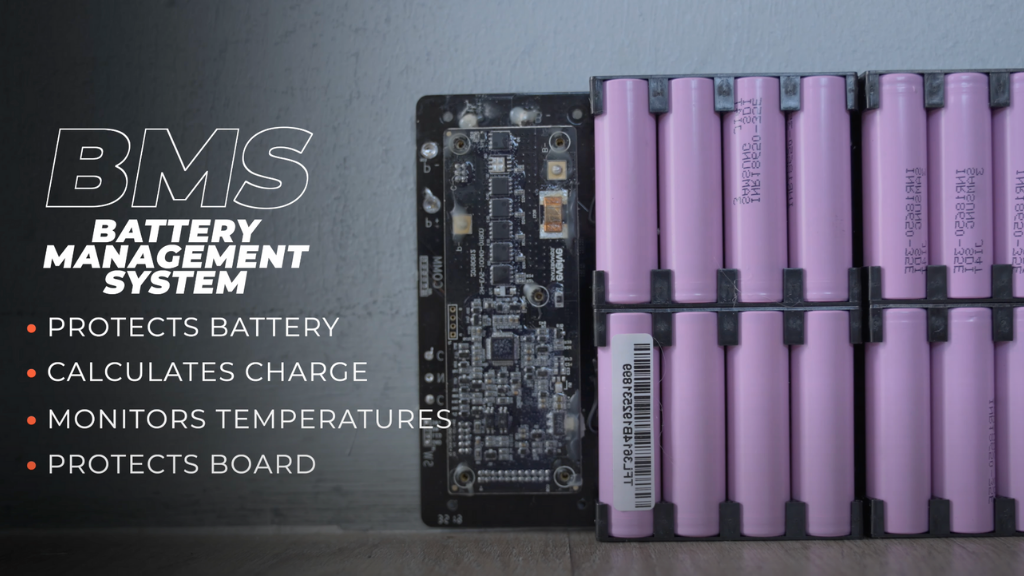Electric Skateboard Battery: Everything you need to know about it

A neglected battery will often be the cause of a board that isn’t performing right, but luckily for you, battery care is pretty easy and simple, so let’s get stuck into it. In this article, Evolve’s technicians will answer the most common questions about electric skateboard batteries.

What is different about an Evolve battery compared to a typical battery?
Firstly, our boards use lithium-ion cells. They have a high energy density, so we can get more current out of a smaller space and keep the e-skateboard profile slim and looking like an actual skateboard. This is one reason why Evolves’ boards are the best electric skateboards on the market. They are low maintenance compared to other battery types. They have no memory effect to always deliver full performance and also have a slow self-discharge rate. Small lithium cells are also easy to assemble in the configuration our boards require, which in turn determines overall battery voltage and current output.

The board itself has a battery management system or BMS. The primary job of the BMS is to protect the battery from being overcharged or over-discharged. Additionally, it calculates the remaining charge, monitors battery temperatures, and protects the board from voltage spikes to internal shorts. Essentially, this little piece of tech takes a lot of the hard work from battery maintenance and protects it from many things you could be doing wrong.

How to store your electric skateboard?
The first big one is long-term storage. If you don’t plan to use your board for weeks or months at a time, you should keep it sitting at between 30-50% charge. It will self-discharge at about 1-2% per month, so we recommend checking every 6-8 weeks to ensure you keep it in between the optimal window.
When it comes to WHERE you store your boards, this is important for both the long and short term. Lithium batteries don’t do well in overly hot or cold conditions. The optimal temperature to store a lithium battery is 50 degrees Fahrenheit, but most room temperatures will be fine. The main tip is to avoid excessive temperature, like leaving it in a cold garage in winter or in your car on a hot day. You also want to keep it in a dry and ventilated area.
The temperature will also affect the capacity and power output of the cells, so if you leave your board in a cold room and then begin to ride, it will have less performance than if it were warm to begin with, and the battery will maintain a higher temperature throughout its use. Of course, if you are out skating in the middle of winter, the ambient air temperature will cool it down and reduce performance but don’t stress too much as the higher performance will return in the Spring with warmer days.
A tip often given online is ‘don’t put your board on charge directly after a ride as you don’t want to charge a hot battery - let the board cool for 30 mins before charging it.
When exactly should I charge my board?
If I do a short ride and the board is at 80%, should I recharge it or leave it for the next ride? Recharging back to 100% isn’t going to do any damage, so we say get it back on charge so you will have a full battery and peak performance for your next ride.

When it comes to charging, the BMS is reading the voltage of the cells and will tell the charger when to stop charging. Its recommended to not leave it on charge overnight.
It’s a good idea to run your board all the way past 0% to the point it turns off every now and then to give the cells the opportunity to do a full charge cycle. Lithium batteries don’t have a memory, so this isn’t crucial for overall battery health. What it does is the BMS’s ability to read the battery’s state of charge - essentially giving you an accurate battery % reading between 100 and 0%.
How long does an electric skateboard battery last?
The type of riding you do also affects the battery's longevity and cycle life. Your board will manage a safe current output of the cells to perform in, so you won’t do any immediate damage by excessively hard riding, but this higher output does decrease the life of the cell. Demanding your board to be near peak performance, like doing every ride at full trigger on thick grass, will have your battery pack working extra hard, and you can expect it to fatigue faster than if all your rides are more of a cruisy electric skateboard ride. This is not unsafe, and we recommend you ride the board however makes you happiest but always good to keep it in mind.

Things to bear in mind
Before we wrap up this guide, we should mention that because lithium batteries are incredibly energy-dense, and if anything goes wrong, they do pose a fire risk. While Evolve has many layers of fail-safes and protections in place to keep the batteries stable, you should be aware of the risk and incorporate that into how diligent you are with battery care. The absolute biggest thing that will cause you issues is water damage - we recommend keeping them as dry as possible to mitigate any risks of water damage to the battery. Other things to avoid are:
- Those extreme temperatures.
- Tampering with the electrics yourself.
- Using aftermarket chargers or electronic accessories.




